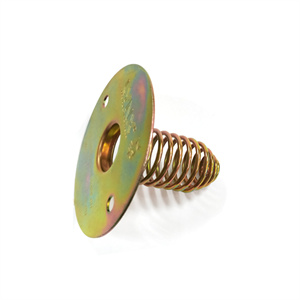Battery contact also known as battery connecting plate, battery connection contact plate, battery spring contact, etc., is an important part of the battery, mainly playing the role of on-current.
Battery contact is generally made of copper, iron, stainless steel and other materials, and has been electroplated with CT, silver, nickel, etc. to improve its conductivity and corrosion resistance. Depending on the application and performance requirements, the material and shape of the shrapnel will also vary.
In metal stamping parts, battery contact shrapnel is a commonly used product, which is widely used in various batteries, electronic equipment, auto parts and other fields. Its excellent conductivity, hand feel, abrasion resistance and fatigue strength make it the best choice for consumer electronics components.
There are many types of battery contact shrapnel, depending on their use and performance requirements.
The Metal Spring Battery Contact offers the following outstanding features and benefits:
Stable contact pressure: the metal compression spring can provide continuous and uniform pressure, ensure close and stable contact between the battery and the connecting parts, reduce the contact resistance and the risk of looseness.
Good elastic recovery: after repeated compression and release, it can quickly recover to the original state and maintain its performance, thus prolonging the service life of battery contacts.
Suitable for vibration environment: it can effectively buffer the vibration generated during equipment operation and prevent poor contact caused by vibration. It is especially applicable to mobile equipment or equipment under vibration working conditions.
High conductivity: It is usually made of high-quality conductive metal materials, such as copper or nickel-plated copper, to ensure efficient current transmission and reduce energy loss.
In actual application:
For example, in the battery pack of electric tools, the metal compression spring battery contacts can withstand strong vibration and frequent plugging and unplugging to ensure the stability of power supply. In vehicle-mounted electronic equipment, it can also maintain good battery connection in bumpy environment.
